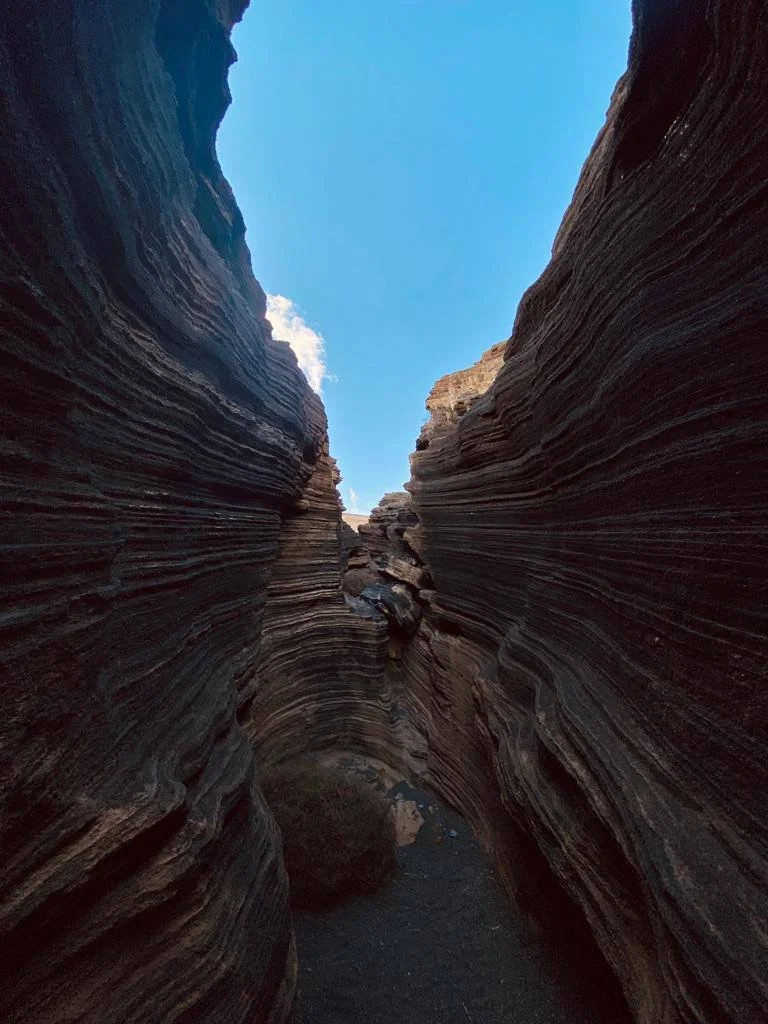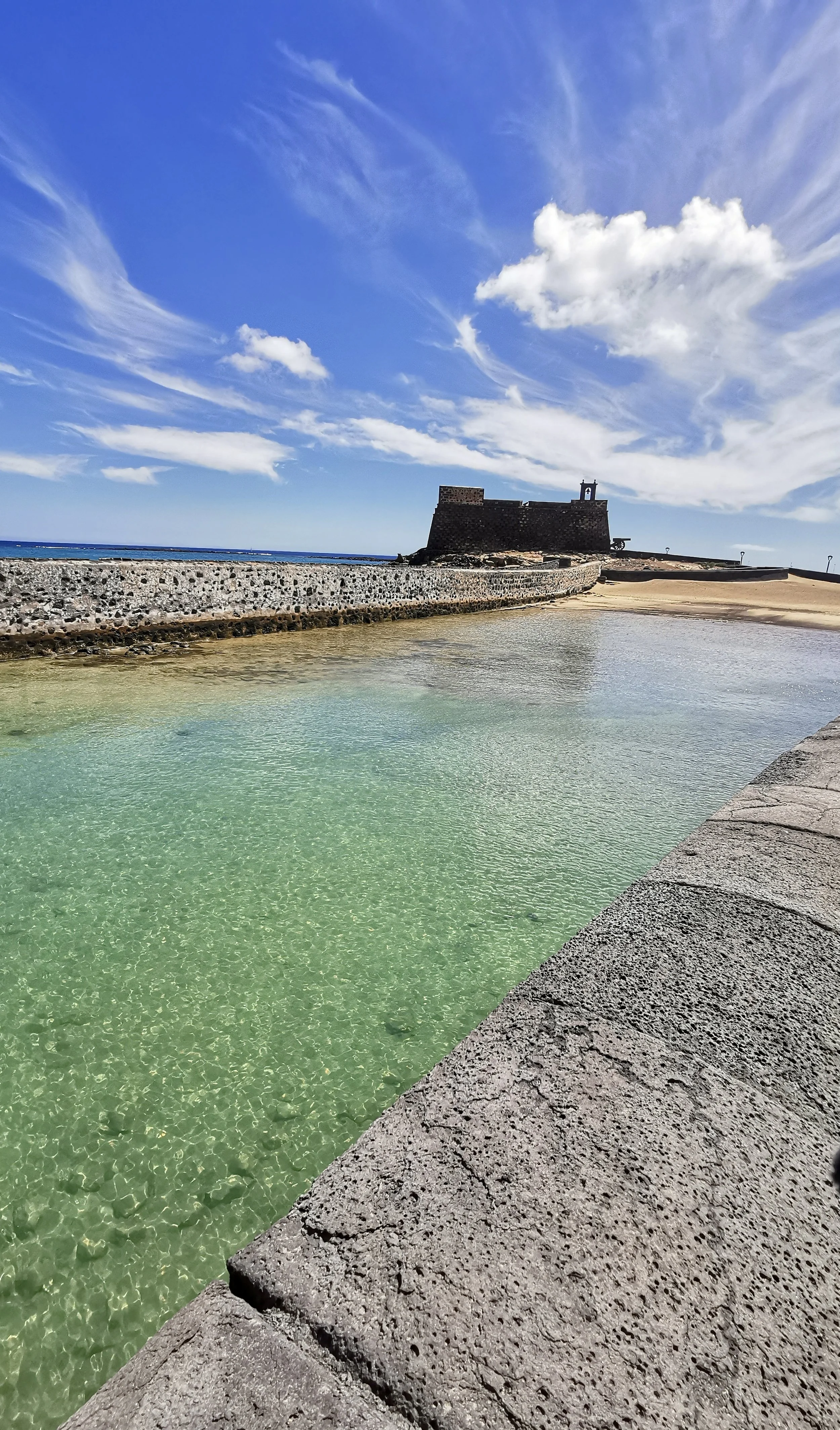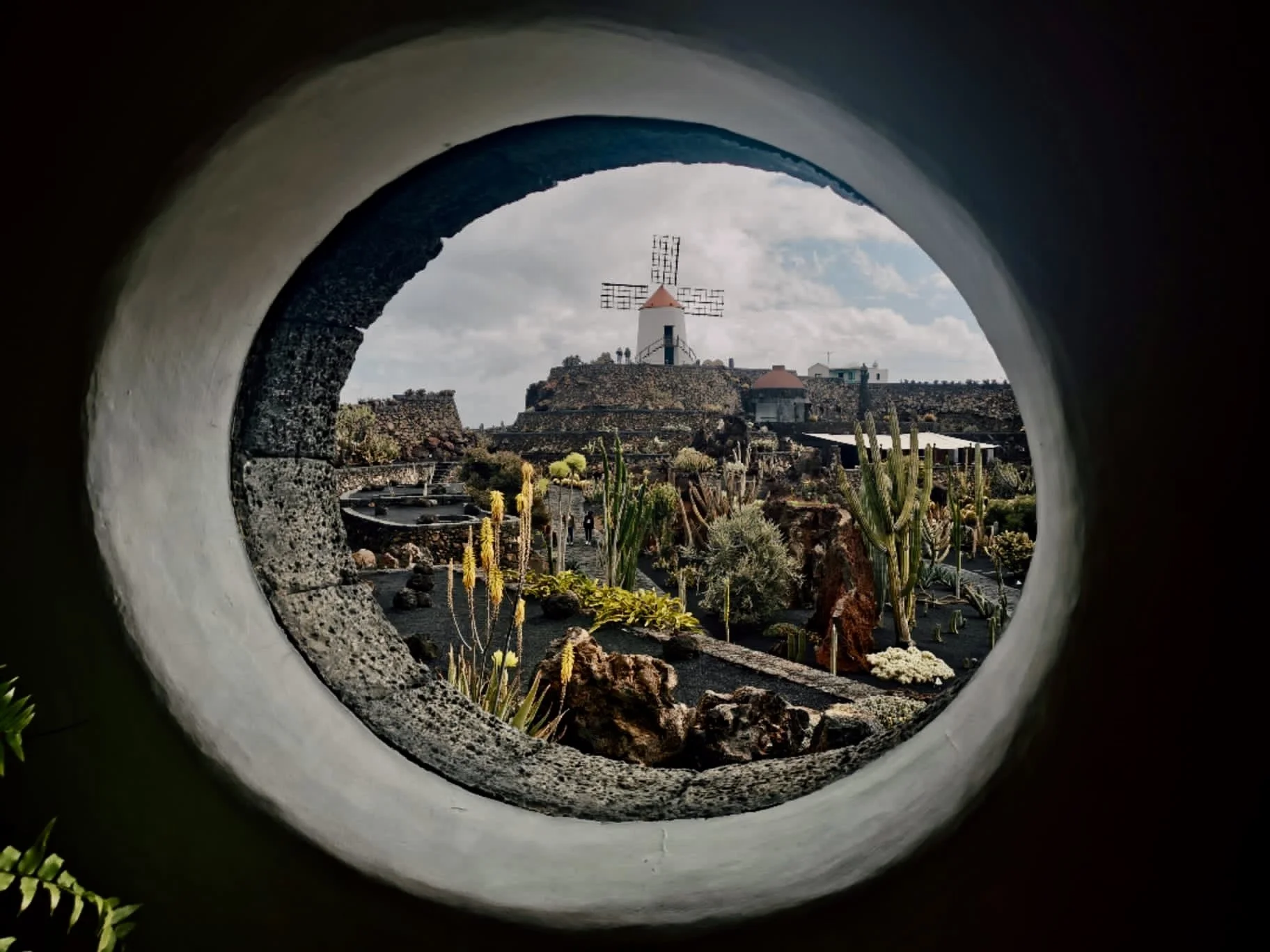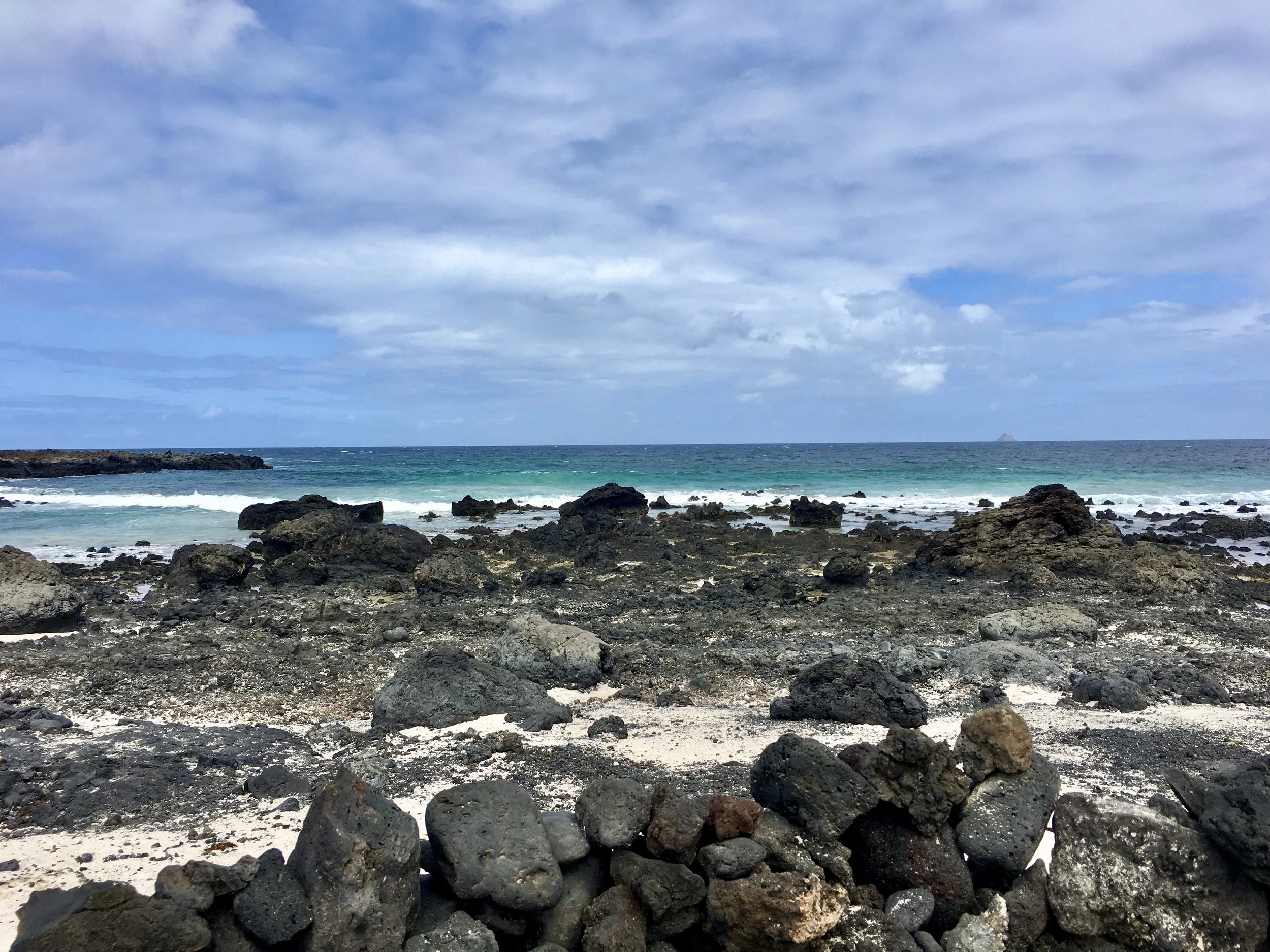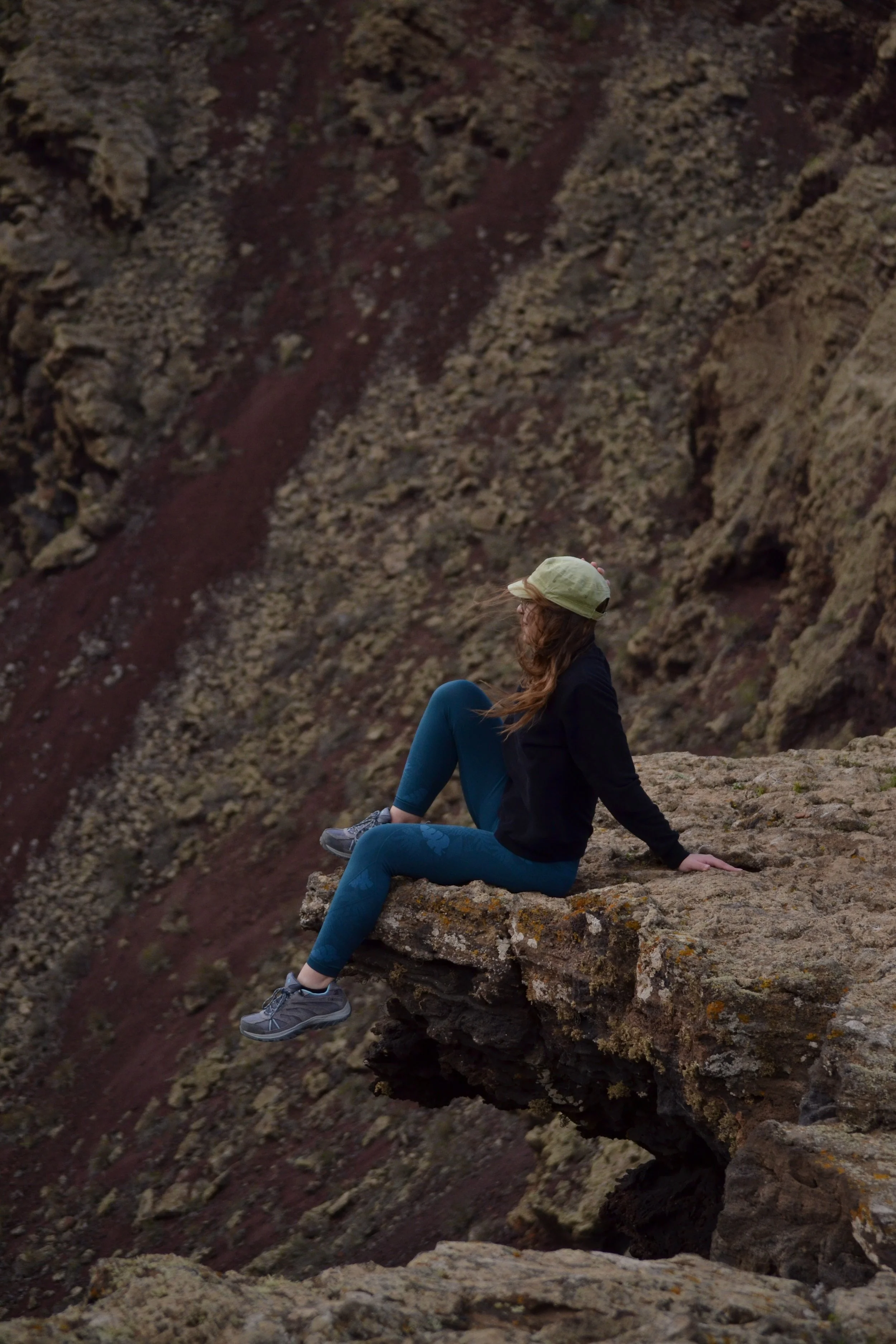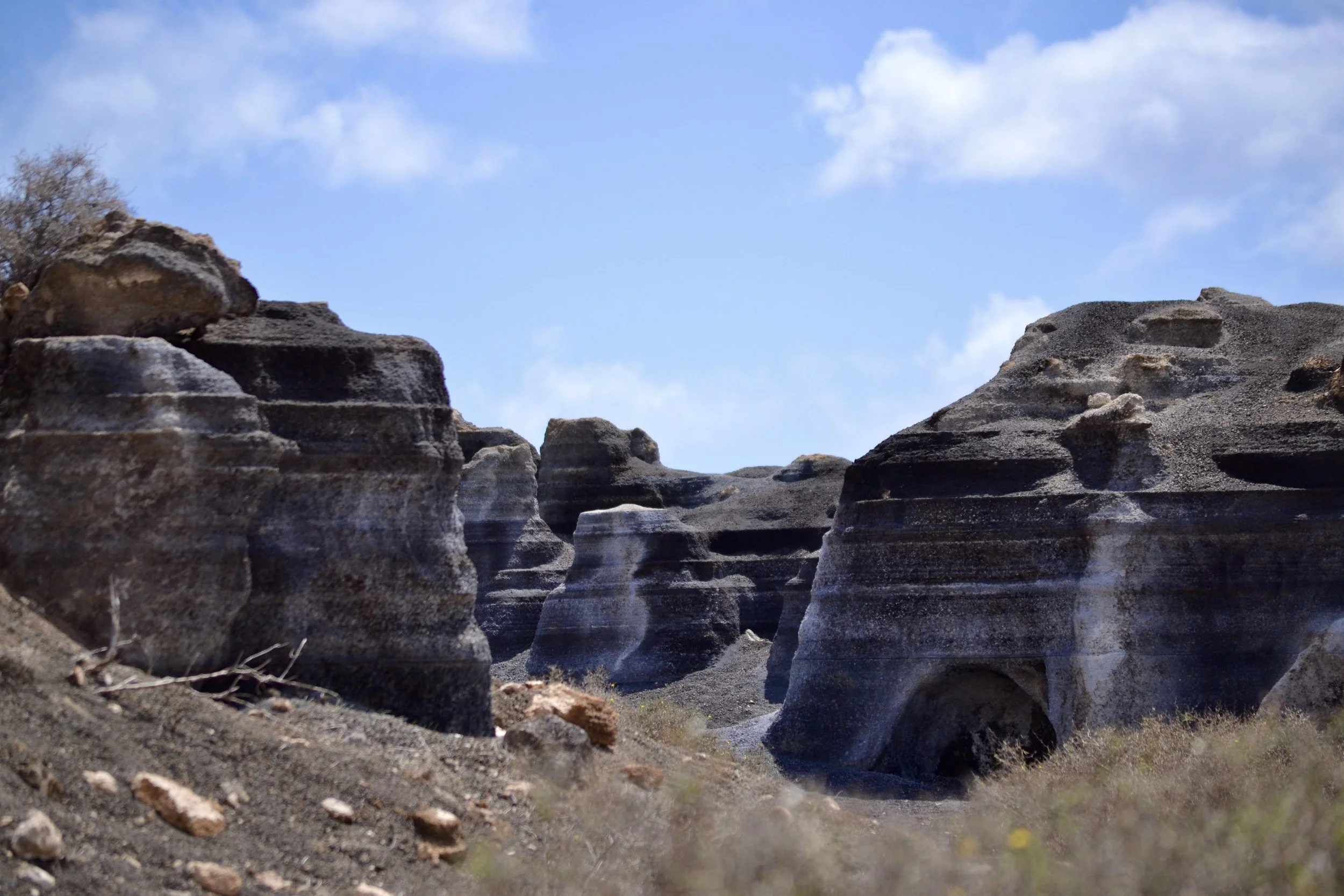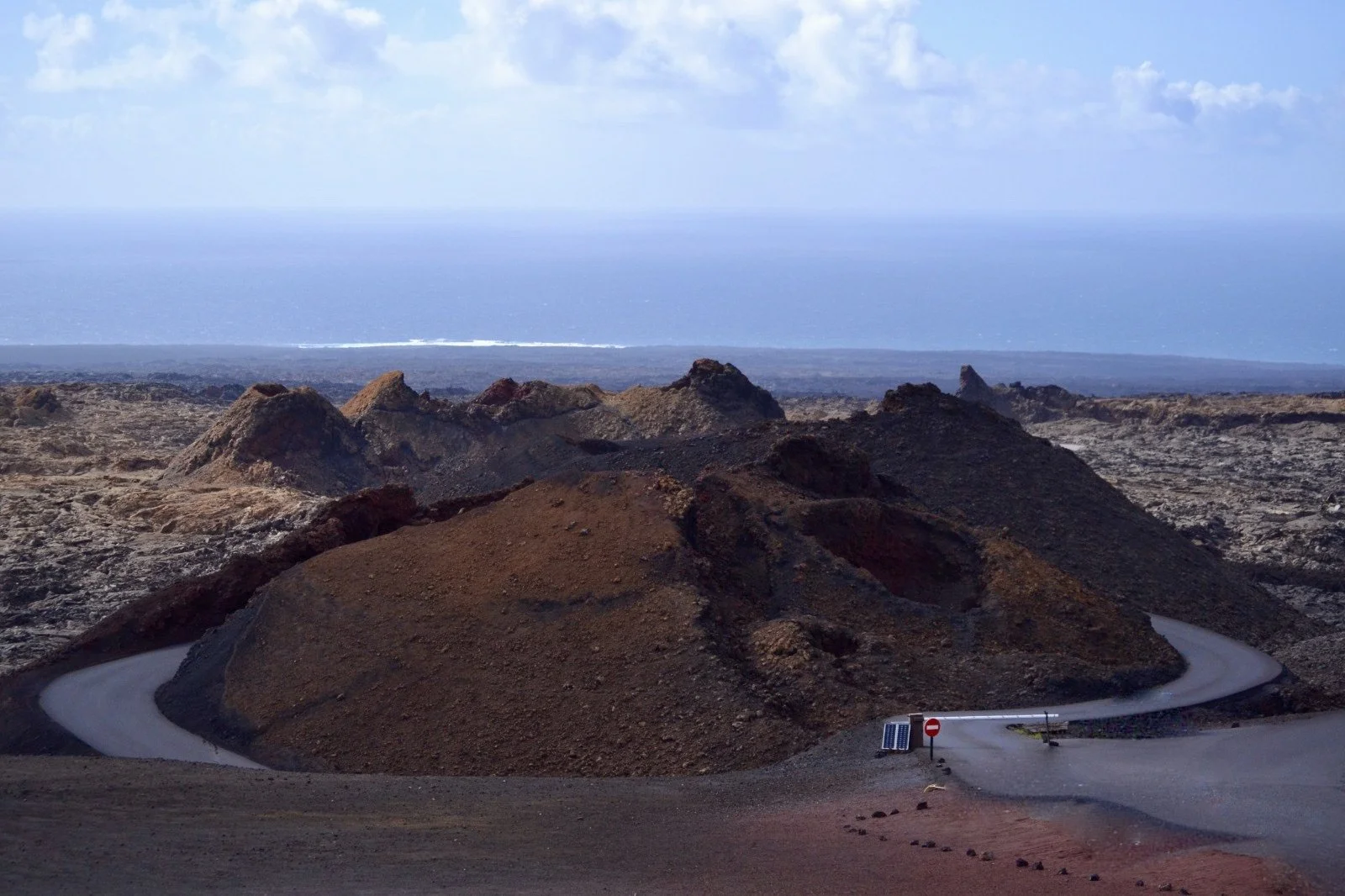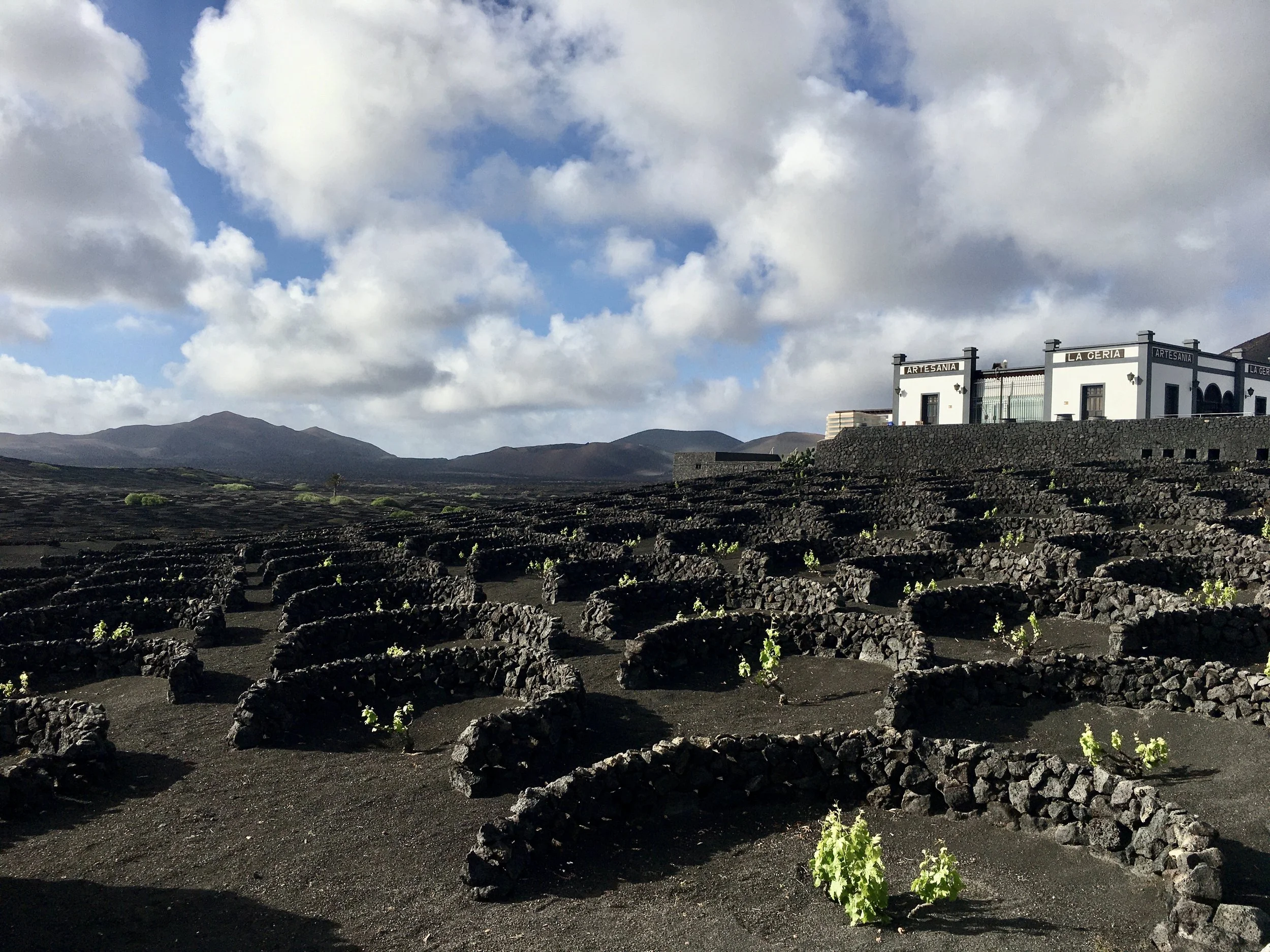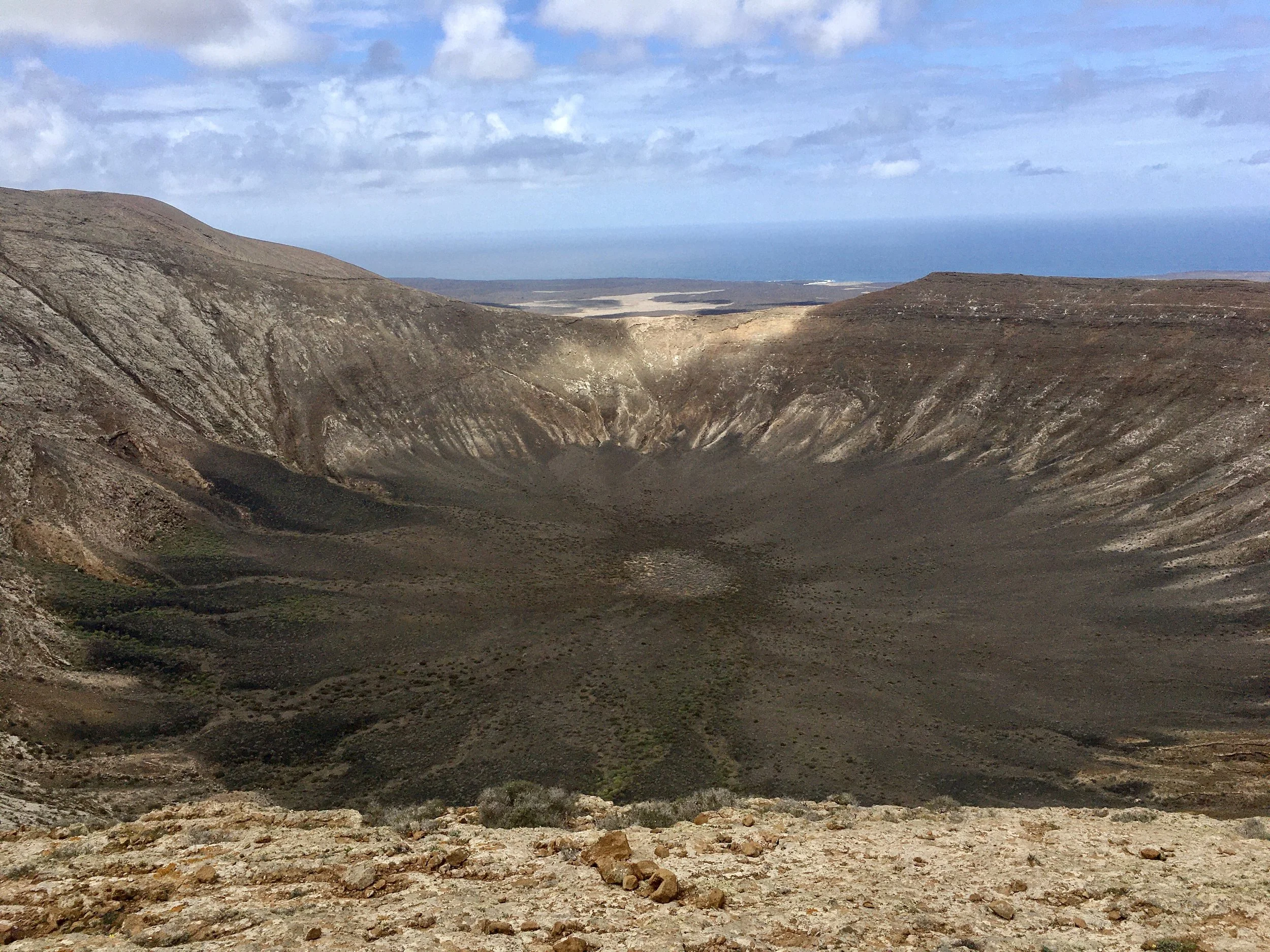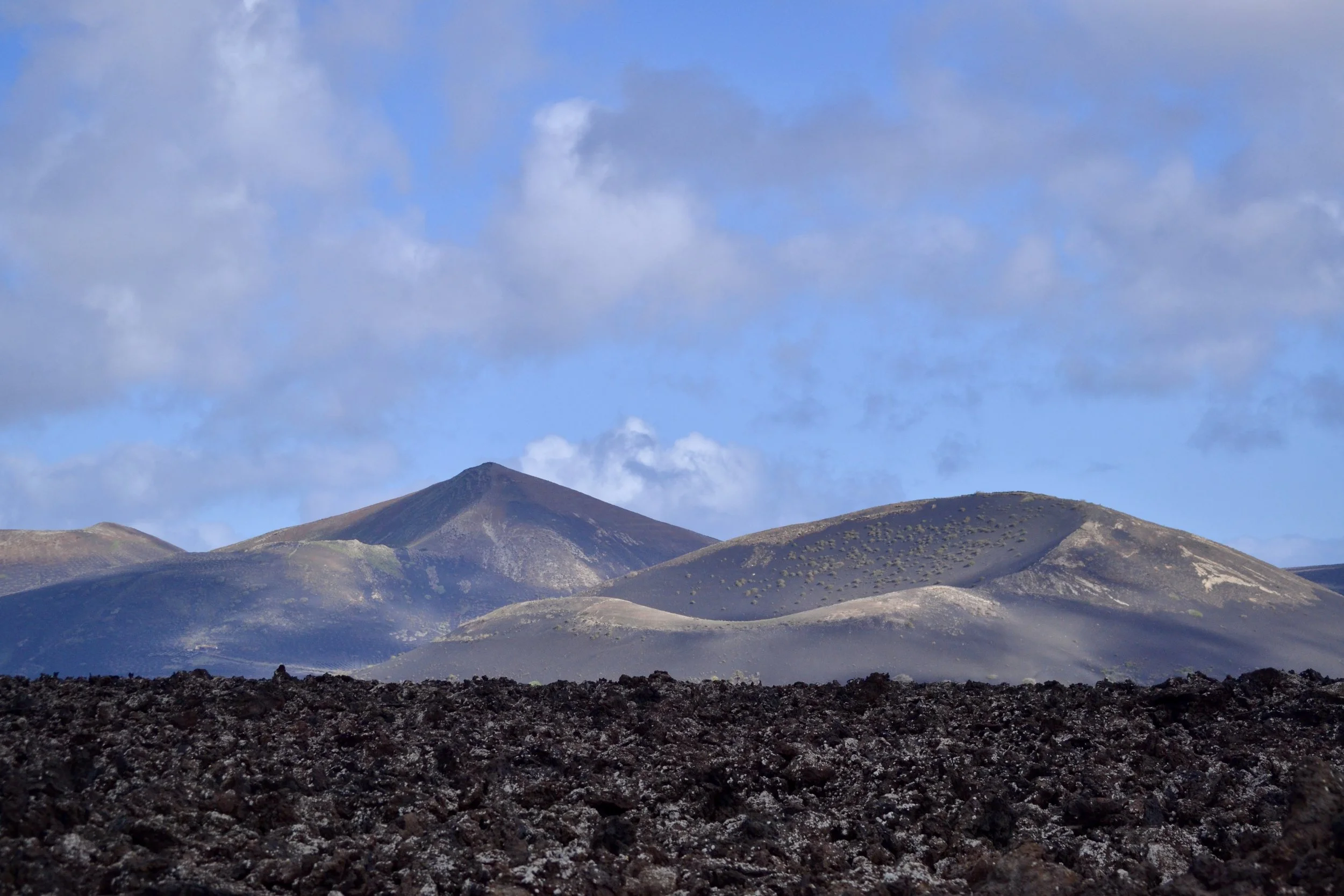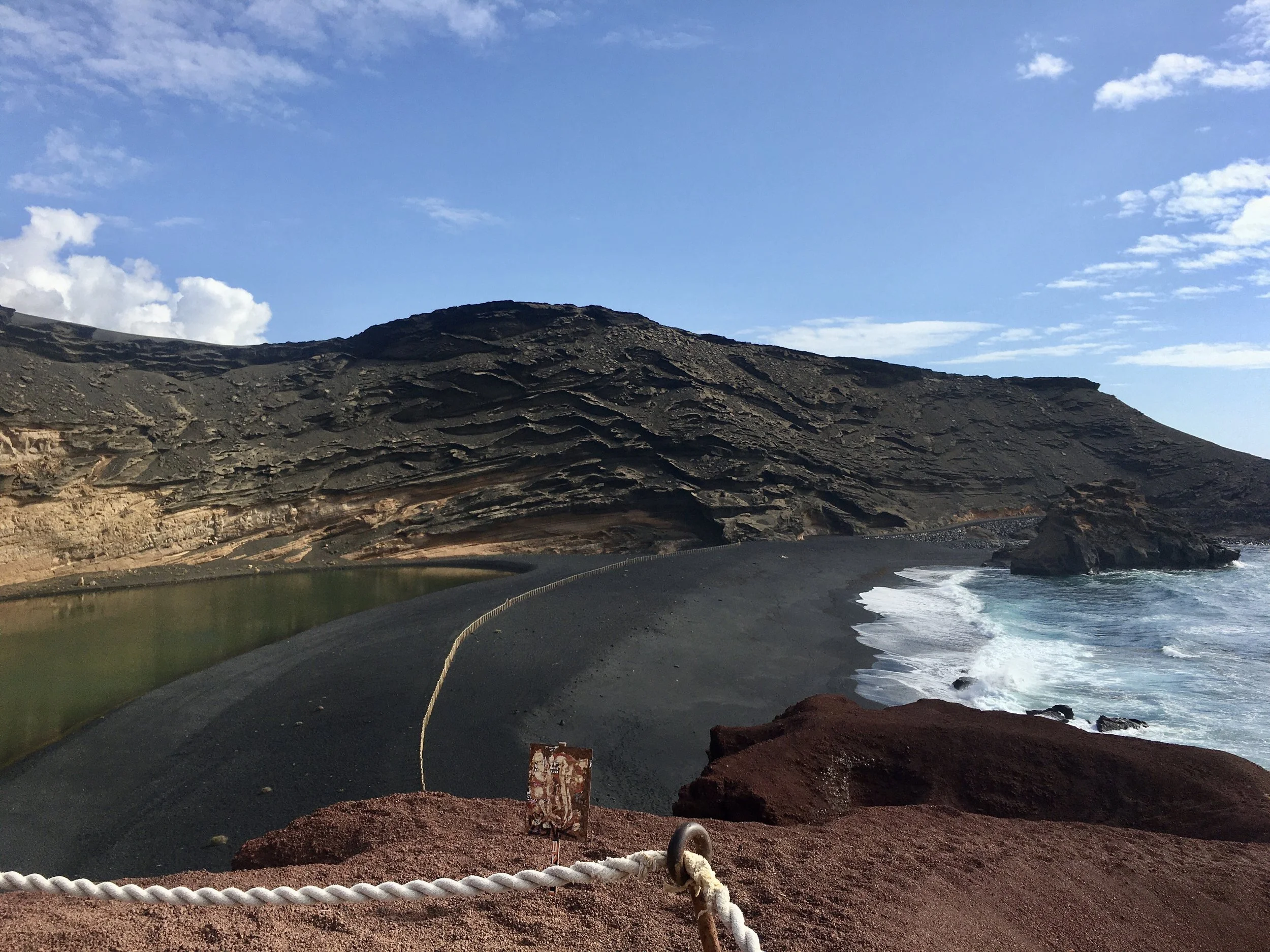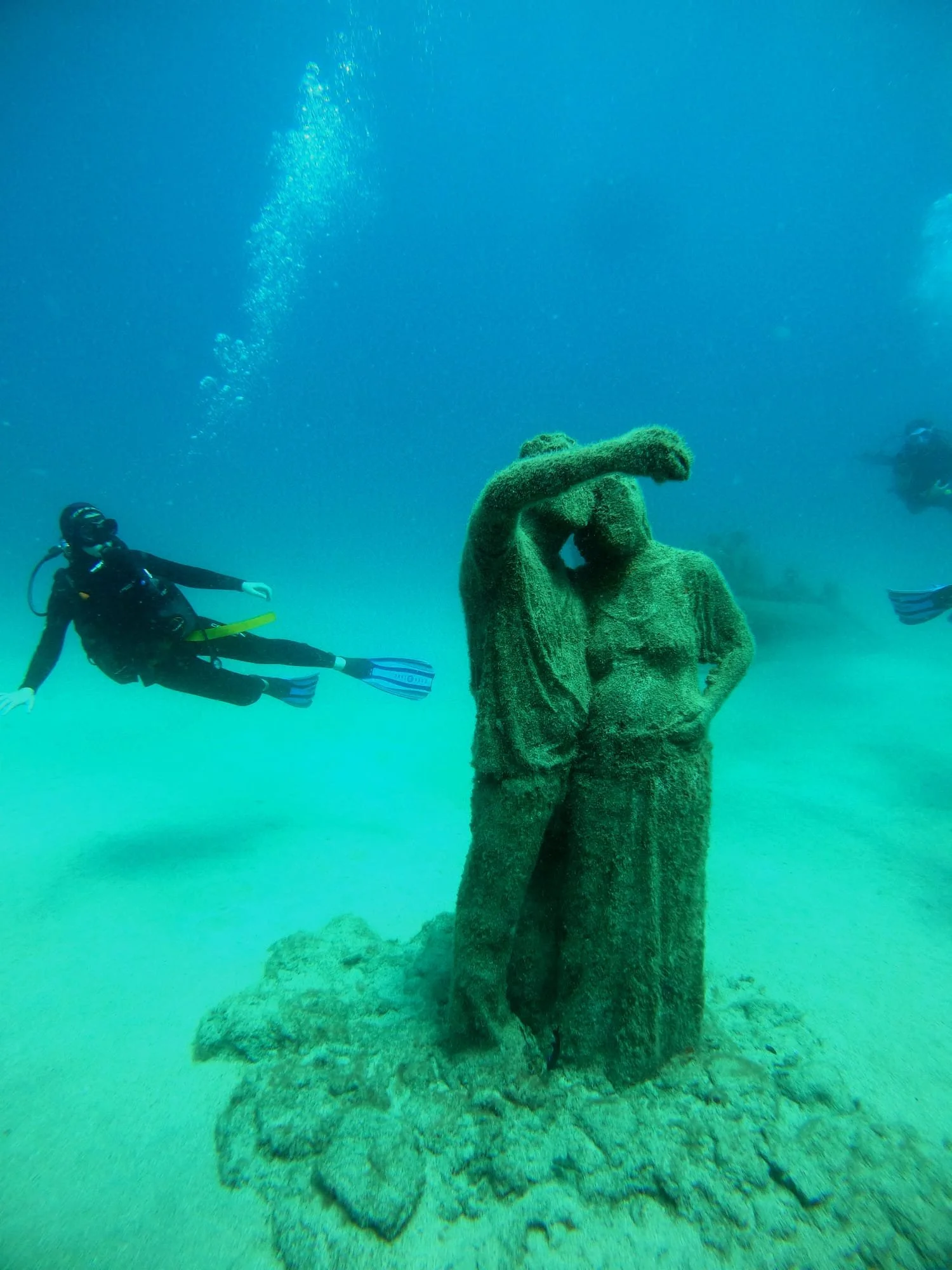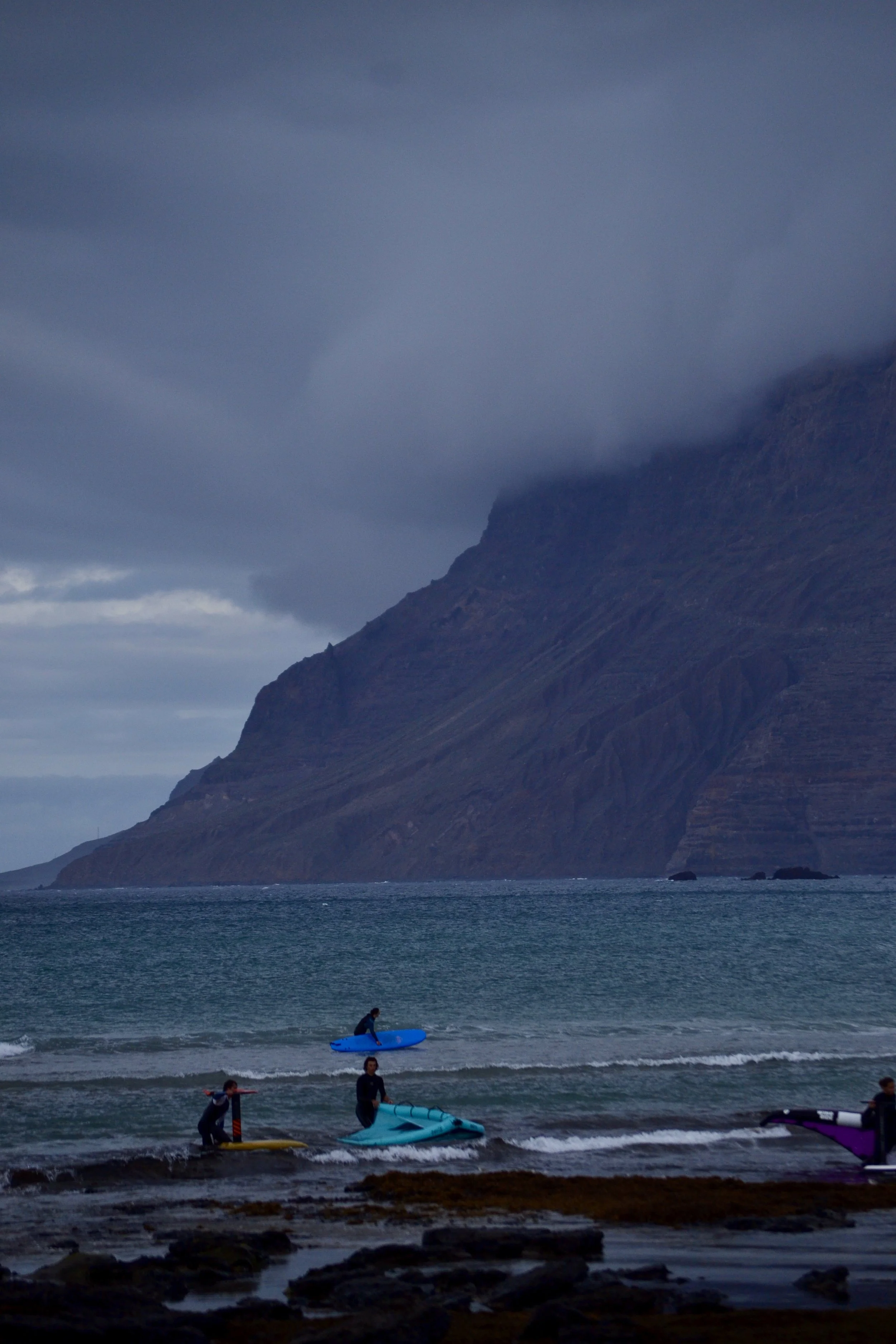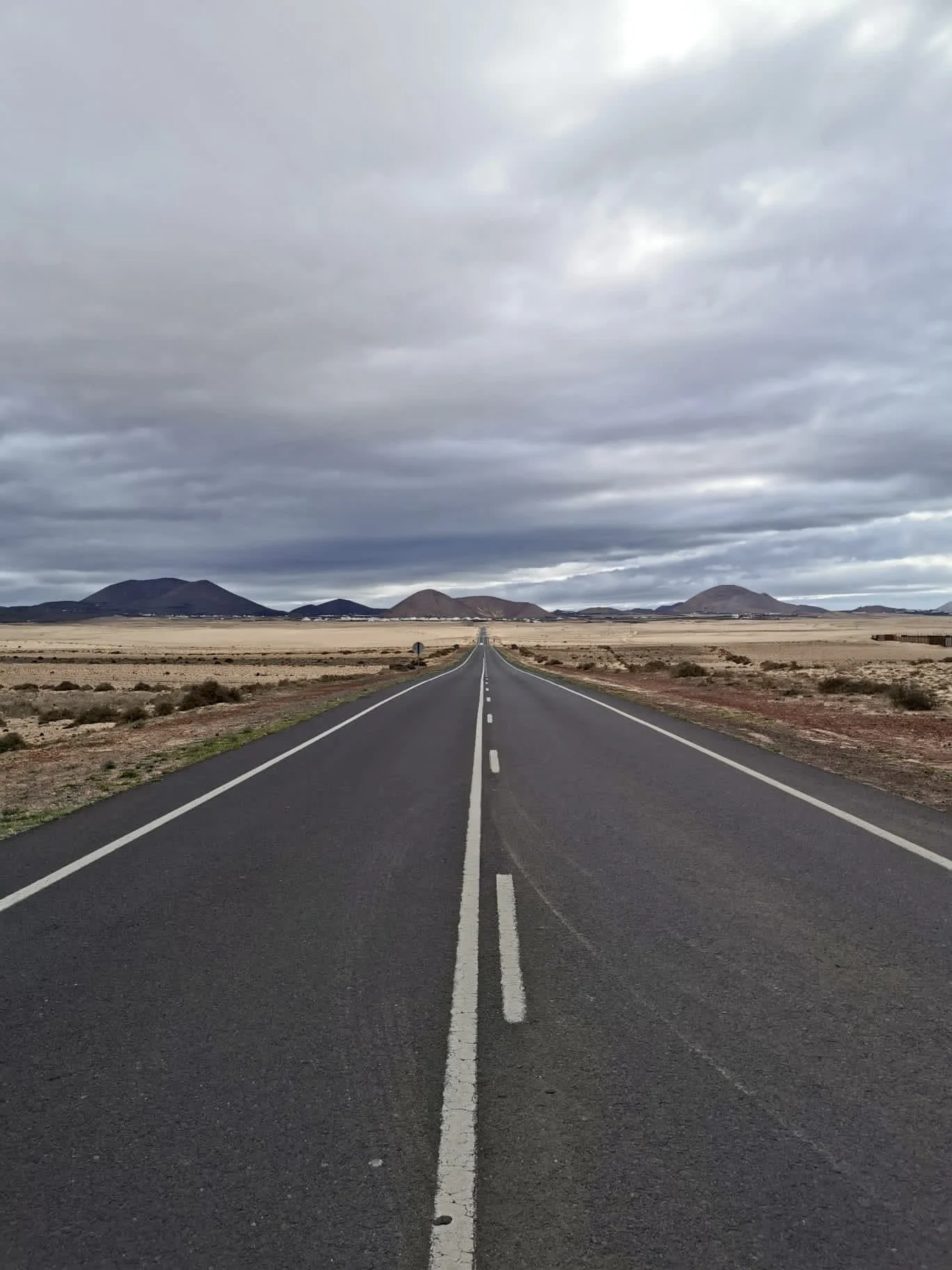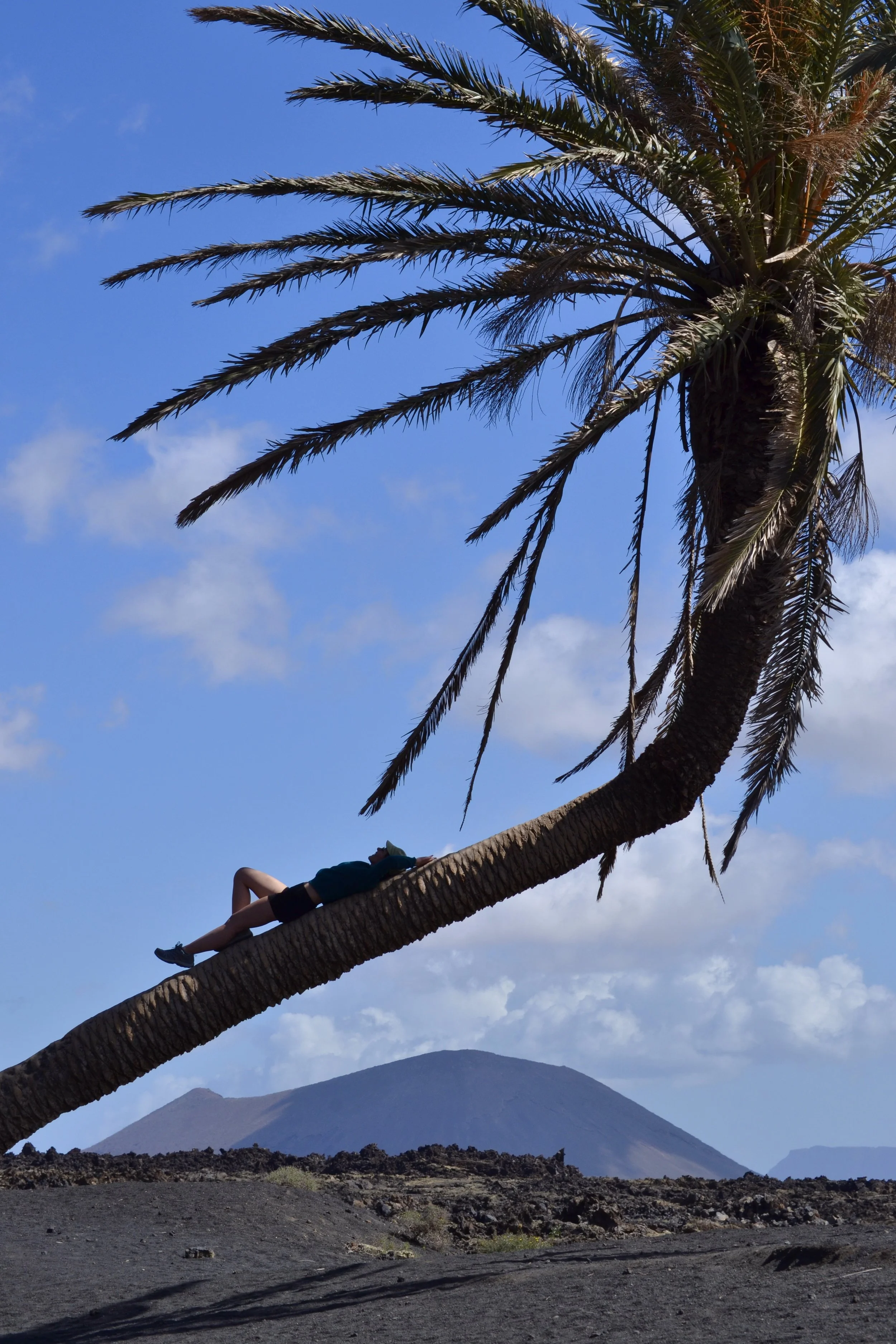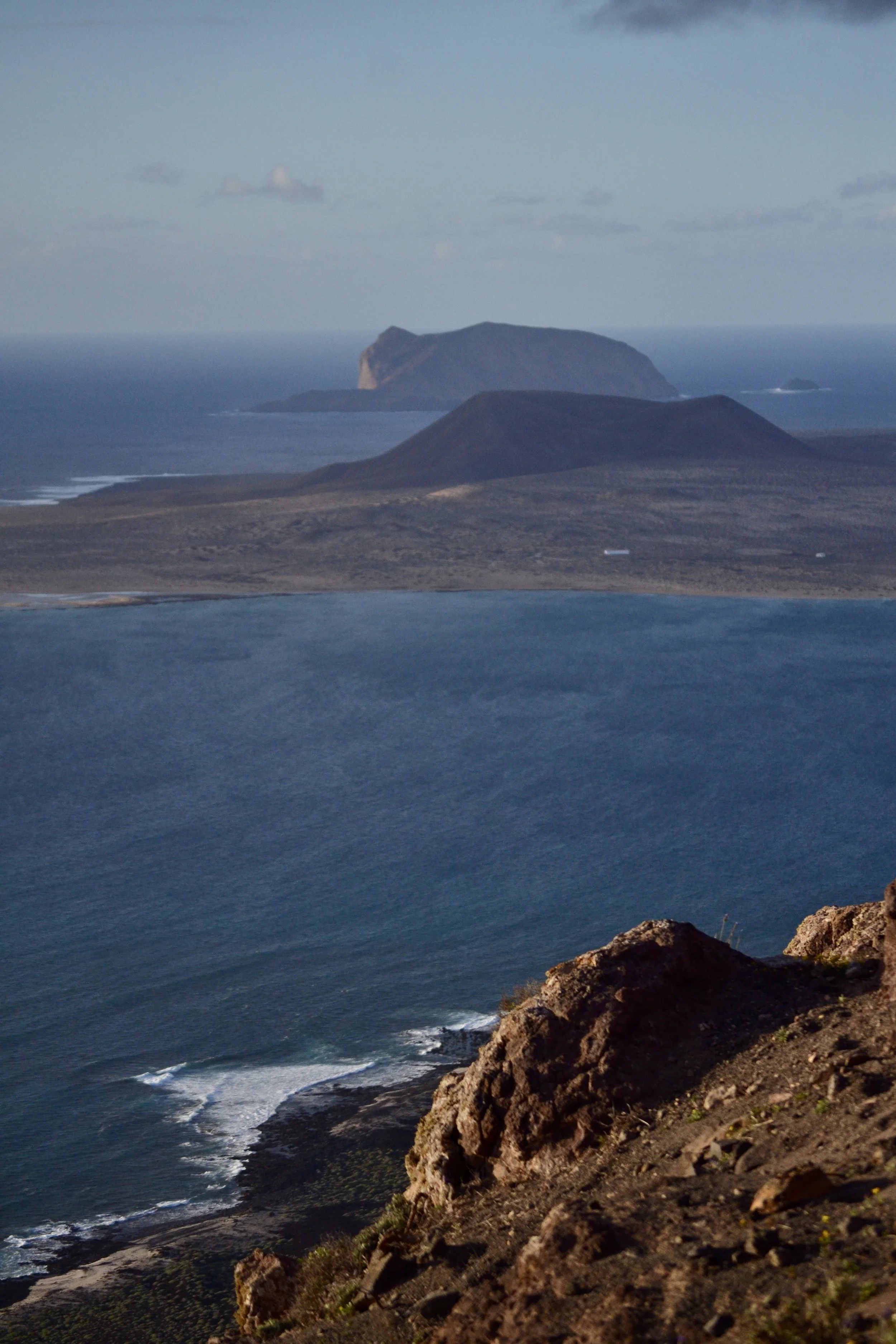On the Island of Fire - 7 days in Lanzarote
A wild island with red-and-black volcanic soil and a glimmering blue ocean. This is what we glimpse from the plane when landing on Lanzarote. It's crazy to think we were walking in Spanish territory since this island's landscape is so peculiar.
One of the Canary Islands, Lanzarote is a place like no other, dominated by four colors: red, black, blue, and white. Everything with splashes of green here and there.
Nicknamed La Isla del Fuego ('Island of Fire'), volcanoes are the true kings of Lanzarote. We never got tired of walking on black sand beaches with red cliffs and the craters of desert-tinged extinct volcanoes.
We made this special trip with our dear friend Valeria, and we truly had the best time!
Come with us on a 7 day trip to Lanzarote, marveling at every inch of the astonishing Island of Fire.
Day 1 – Arrecife
Since the island isn’t that big, we decided to base ourselves in Arrecife, the capital city.
On the eastern coast of Lanzarote, Arrecife is a lovely port city from where ferries depart for the other Canary Islands. Arrecife also hosts the only airport on the island, so wherever you have your accommodation, the starting point of your adventure will be this city.
Landing on the island is a magical experience: the mesmerizing colors of Lanzarote disclosed under our eyes - we were in love with the La Isla del Fuego even before we stepped foot in its soil.
We retrieved our rental car at the airport and made our way to the Airbnb. Just the time to check in, and we hit the road immediately. The smooth roads led us to Las Grietas, a small, walkable canyon facing the Atlantic Ocean. We were lucky enough to be there at the best possible time, mid-day, when the sun at its zenith illuminates the rocks of the canyon that turn into a fabulous pearl gray color.
Las Grietas, Lanzarote
After the first of many photoshoots, we took the long road back to Arrecife. We parked and stopped at the main beach, Playa del Reducto, where we laid down for a while to sunbathe.
After the break, we walked around the city and reached the Castillo de San Gabriel. This castle is located on the Isla de Los Ingles, accessible by the mainland through two walkways. The castle is really scenographic, and inside is a museum displaying the ethnographic history of Lanzarote. We didn’t visit the museum; instead, we chilled out on the small beach next to the castle.
Castillo de San Gabriel, Arrecife, Lanzarote
The Castillo de San Gabriel is right before Arrecife main promenade, packed with bars, cafes, and restaurants: we couldn't help but sit down for a refreshing cerveza (beer).
We then drove back to our apartment to rest and be ready for day 2 of our adventure.
Day 2 – In the North of Lanzarote
Early wake, quick breakfast, packed lunch, and we jumped on our Citroen towards the north of the island.
The first stop of the day was the Jardín de Cactus (Cactus Garden), one of the works of local artist César Manrique. The specialty of Manrique's art is the perfect integration between architecture and nature.
The Jardín de Cactus houses more than 10,000 cactus plants originally from areas as far away as Peru, Tanzania, and Madagascar.
What's really stunning about this garden is the juxtaposition of colors: the many different shades of green of the cactus with splashes of color of their flowers that stand out against the blue sky and dark volcano soil.
Jardín de Cactus, Lanzarote
We weren’t done with Manrique’s work for the day: driving north, we arrived at the Jameos del Agua and the Cuevas de los Verdes, both lava tubes created around 3,000 years ago from the eruption of Volcan de la Corona.
Jameos del Agua has been transformed into a unique complex where nature and human actions merge. The site hosts an underground salt lake, a museum with an auditorium, a luxurious swimming pool, and a restaurant.
The Cuevas de los Verdes is a two-kilometers-long cave system beautifully illuminated by colorful lights. This jameo (“cave”) has two striking characteristics: a stunning underground concert hall that can seat up to 500 people and a special optical effect that we won’t spoiler…!
Cuevas de los Verdes, Lanzarote
Back on the road, we began driving the coast up to the northern tip of the island. The area is a series of small sandy beaches and rocky coves, and we decided to stop at one, Avenida del Caletón, to have our lunchbox.
Lanzarote is a windy island, and on this day, the wind was pretty strong. But the beach we stopped at had handy man-made lava walls that formed tiny “halls” to hide inside to find shelter from the wind. What a cool lunch setting!
Somewhere along the Avenida del Caletón, Lanzarote
After lunch, we headed to the Volcan de la Corona for the first hike of our holiday in Lanzarote. We parked in front of a little church in the town of Ye, where the trail started, and our 3-kilometer-long hike began. The hike wasn’t that challenging, and once at the top, the view was pretty suggestive.
Lots (and lots) of photos later, we headed back to the car.
Volcan de la Corona, Ye, Lanzarote
It was late afternoon, which meant only one thing: cerveza and tapas time! Reaching the gorgeous coastal village of Orzola, we stopped in one of the bars and restaurants on its tiny promenade, the characteristic Restaurante Os Gallegos. Here, we enjoyed a refreshing beer alongside pan y tomate (“bread with tomatoes”) and papas arrugadas, the Canary Islands’ national dish, made with local potatoes and served with different sauces.
Back in Arrecife, we dined at our apartment and went to sleep, looking forward to a thrilling next day.
Day 3 – Timanfaya and La Geria
Another day, another early bird wake! After a quick breakfast and lunch packing, we made our way to the Antigua Rofera de Teseguite.
Also known as Stratified City, it’s the most unique rock formation on the island. This bizarre-looking “city” is a series of volcanic rocks shaped by wind and rain over the centuries. Walking around and on top of massive rocks and going inside weird rocky halls and tunnels is an otherworldly experience!
Stratified City, Teguise, Lanzarote
Back on the road for just 10 minutes, we reached the town of Teguise, Lanzarote’s former capital city. We strolled around its beautiful center with the white houses and the tall brick bell tower looming over everything else.
In Teguise, you can still breathe the authentic spirit of the island as if the town is frozen in time.
We stayed in Teguise for a while and then drove to Lanzarote’s unmissable attraction, the Timanfaya National Park.
This incredible park is a UNESCO-listed biosphere reserve, which has the only left active volcano on the island.
The landscape of the Timanfaya seems as though it belongs on Mars! Stretches of dusty roads lined with high walls of reddish rocks that go on and on for kilometers - what a spectacle!
The park can only be explored by bus or hike tour: since we were traveling on a budget, we had to opt for the bus tour, but if you can, go for the hike!
Timanfaya National Park, Lanzarote
Join this awesome Timanfaya National Park Trekking Tour
With eyes still full of wonder, we got back in the car and drove to La Geria, Lanzarote's wine valley. It's incredible to think that we just left an incredible place (the Timanfaya) to find ourselves in another out-of-this-world spot!
The main characteristic of La Geria is that the plants are cultivated inside man-made lava rock circles to protect them from the strong wind. The volcanic soil is incredibly fertile, and grapes are among the plants successfully grown here.
The special process used to grow the Malvasia grapes gives the wine a unique taste: the proof of the pudding is in the eating it! We couldn't help but have a delightful happy hour at the Bodega La Geria, a historic family-run winery where we enjoyed the local products.
La Geria, Lanzarote
Wine sipping, we admired the sun setting over the all-black landscape sprinkled with the lush green of the plants. A perfect way to end a perfect day.
Day 4 – Driving to the West of the Island
Gray clouds were shading the sky this morning, but we planned to hike the Caldera Blanca - and that was exactly what we did.
The Caldera Blanca is one of the volcanoes in the Parque Natural de Los Volcanes. The way up was easy, and the view from the top was absolutely stunning: a landscape of black solidified lava interrupted by the hill-tall, okra volcanoes.
Caldera Blanca, Parque Natural de Los Volcanes, Lanzarote
Hiking up was fun - the way down, not so much. Following the other visitors, we decided to hike down from the opposite side of the volcano; however, the ground was rather slippery, and without trekking shoes, it was quite challenging! Only Martina had the proper shoes, so she arrived at the bottom without effort. For the rest of us, it was a “be careful - don’t fall” experience.
After a long while, we were down, and we could finally enjoy a well-deserved lunch.
Parque Natural de Los Volcanes, Lanzarote
With a now-clear sky and the sun shining above us, we arrived at the coastal town of El Golfo. There are many cute cafes and restaurants on the seaside promenade: we stopped in one for a much-needed coffee.
Sun-kissed, in a nirvana-like state, we remained there for a while before walking to reach the Charco de Los Clicos. The place is stunning: a green lake surrounded by red-and-brown rocks, the blue sea, and white houses.
Charco de Los Clicos, El Golfo, Lanzarote
Many photos later, it was time to go back to Arrecife, but not before a stop in the all-white village of Yaiza. We wander around for a while and then back to Arrecife.
Day 5 – Lanzarote’s Southern Beaches
We planned to dedicate Day 5 to exploring the island’s beaches, and we couldn’t be more lucky: the sun was shining when we woke up, and there was not a single breeze of the strong wind that characterizes Lanzarote.
The perfect weather to go to the beach!
Our first stop had to be Lanzarote’s most famous beach: Playa de Papagayo. This beach is part of Los Ajaches National Park, so there is an entrance fee to access it. It costs only 3€, and it is free after 4 pm.
Getting to the beach was an adventure: there is a 4-km-long bumpy road inside the park that you need to drive on to arrive at Playa de Papagayo. You better have a car with good suspension!
Playa de Papagayo, Los Ajaches National Park, Lanzarote
Playa de Papagayo is stunning, so we weren’t surprised to see it crowded: after a couple of hours, we decided to leave for another beach. In just 20 minutes, we were at Playa Dorada. The golden soft sand and the crystal clear waters were to die for! A big part of this beach is reserved for hotel residents, so we stayed in the free section and enjoyed our time there.
The next beach we explored was Playa Blanca, a 10-minute walk from Playa Dorada. Playa Blanca’s promenade (also the name of the town) overflows with restaurants and cafes, and we had lunch at a random one.
The peculiarity of Playa Blanca is its location, right beside the port from where the ferries depart for the other Canary Islands - Fuerteventura being so close that you can see it from the beach!
The proximity to the port brings along a “tsunami-like effect”: when a ferry arrives inside the port, big waves come crashing on Playa Blanca… so the only way to not get soaking wet is to flee ASAP!
We had to deal with a couple of sudden weaves ourselves - and we always made it out dry.
Playa Blanca, Lanzarote
After lunch, Martina left for a beautiful experience: visiting the Atlantic Museum, the first underwater museum in the Atlantic Ocean and Europe. She got her diving gear and jumped on the water to admire the sculptures on the bed-sea at a depth of 12 meters.
You don’t need to be a certified scuba diver to visit this very special museum (although she has the license) - so you can do it too!
Atlantic Museum, Lanzarote
Once we dropped Martina off at the diving site, the rest of us went back to Playa Blanca to chill and sunbathe – guess who’s the most adventurous of the group…!
We enjoyed Playa Blanca so much that we remained for dinner.
Our restaurant choice was something special: a tapas place that hasn’t aged a second since the 1980s! I mean, what’s better than prawn cocktails served in a champagne glass with a colorful mini-umbrella on top?!
After dinner, we enjoyed a lovely walk around town before returning to our apartment in Arrecife.
Day 6 – San Bartolomé and Playa de Famara
Our holiday was coming to an end, but Lanzarote had more magical places for us.
After the usual breakfast, we hit the road to reach San Bartolomé.
Strolling around the town’s streets was a journey back in time: in San Bartolomé is the last remaining working windmill on the island. The wind is a fundamental energetic resource for Lanzarote, and everywhere you go, you will see white wind turbines rhythmically moving like tall dancers.
Credits: Turismo Lanzarote
After San Bartolomé, we drove up north to visit Lanzarote’s other popular beach, Playa de Famara. This is the best spot to surf on the island due to the strong wind that creates perfect waves.
There are numerous surf schools in Playa de Famara where you can try your hands at surfing or windsurfing.
Playa de Famara, Lanzarote
Check out these Famara Beach Surfing Lesson for All Levels
We were ready to give surfing a try, but it suddenly started to rain, and the temperature dropped to the point of being cold - which wasn’t surprising after all since we went to Lanzarote in the first week of March.
We left the beach and drove to a nearby road known for resembling the famous Route 66. Once in the small town of Soo, you need to take the road LZ-401 to remain speechless in front of the beauty that will be disclosed in your very eyes!
Somewhere outside Soo, Lanzarote
A million pics later, we headed to Puerto del Carmen, Lanzarote’s nightlife hub. We had dinner and then danced the night away in a popular disco club.
With the darkness fading into daylight, we went back to our apartment in Arrecife to get some hours of sleep.
The next day would be our last on the Isla del Fuego.
Day 7 – Los Volcanoes National Park and La Graciosa Island
Day 7 began with a busy morning: breakfast, packing, and checking out of the apartment. There was no time to waste: our flight was at 8:30 p.m., but we weren’t done yet exploring Lanzarote.
Two hikes occupied the rest of our morning, both at Los Volcanes National Park. Our first trek was at La Montaña Colorada, while the other was at Caldera de Los Cuervos.
Palmera Inclinada, Lanzarote
We ate the packed lunch inside the car and then drove north to Mirador del Rio, one of the most scenic panoramic points in Lanzarote. From here, it’s possible to admire the small island of La Graciosa, which is so close that you will feel like you can touch it if you reach out.
La Graciosa Island
The afternoon wasn’t over yet. The next stop on our road map was the town of Haría. With white houses and hundreds of palm trees perched in the Risco de Famara mountain chain, Haria is one of the most beautiful places in Lanzarote.
With the sun going down, we were in need of finding a spot to watch the sunset. The search was soon over. A bumpy road, reminding us of that time inside the Los Ajaches National Park, led us to the top of a cliff from where we admired the ocean tinged with the orange-and-pink colors of sunset.
The image of the fiery sun getting ready to rest for the night was the perfect way to end our time on the Island of Fire.

